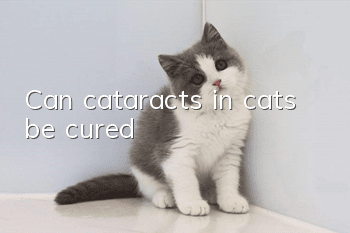A compulsory course for raising cats: some basic knowledge about the cat’s heart!

For cats, the heart also plays a leading role in the overall situation
Required courses for raising cats: some basic knowledge about the cat heart! The heart is an important functional organ of the body, transporting blood to the whole body. The heart plays a leading role in the internal organs in the body, and the same is true for cats. The heart also plays a leading role in the overall situation. The heart is closely related to the blood, and the blood is the basis for the normal activities of the body, so you want to understand cats and the substances in their bodies. For activities, you might as well start by understanding the heart.
1. What are heart rhythm, heart rate and heart sounds?
The heart is constantly contracting , diastole, forming a rhythmic and regular beating. People call this beat pattern a heart rhythm; and each contraction of the heart, plus the corresponding time of relaxation, is called a cardiac cycle. Heart rate refers to the number of heartbeats per minute.
Heart sounds are the sounds produced during the cardiac cycle when the myocardium contracts, the valves open and close, and the blood flow velocity causes mechanical vibration of the cardiovascular wall. It can be transmitted to the chest wall through surrounding tissues and can be heard by placing a stethoscope on certain parts of the chest wall.
2. Do you know the location and shape of the heart?
The heart is located in the chest Inside, about 2/3 is on the left side of the midline of the body, and 1/3 is on the right side of the midline. In front of it is the sternum; behind it are the esophagus, great blood vessels and vertebrae; on both sides are the lungs, so the heart is strongly protected. The shape of the heart is like a crooked pear, with the base of the heart wide and pointing to the upper right, and the apex of the heart pointing to the lower left. Because the bottom of the heart is where the great blood vessels enter and exit, it is immobile. The apex of the heart can move freely within a certain range.
The heart is surrounded by two thin and smooth membranes called the pericardium. There is a gap between the two layers of pericardium, called the pericardial cavity, which contains a small amount of light yellow to clear fluid called pericardial fluid. Pericardial fluid lubricates the heart as it beats, reducing friction and resistance. The pericardium surrounds the heart and protects it from overexpansion.
3. What is the internal structure of the heart?
The appearance of Xinyu seems simple, but its internal structure is more complicated. If the heart is cut open and the blood is removed, it can be seen that the interior is divided into two parts, the left heart and the right heart, by a septum. The left heart wall is slightly thicker; the right heart wall is thinner. The left and right hearts are each divided into upper and lower halves by a flower-like thin film (called a valve). The upper part is the atrium and the lower part is the ventricle. Because the valve is located between the atrium and ventricle, it is also called the atrioventricular valve. The valve between the left atrium and left ventricle is composed of two pieces, called the mitral valve. The valve between the right atrium and the right ventricle is composed of three pieces and is called the tricuspid valve. between the left atrium and right atrium,There is no communication between the left ventricle and the right ventricle since birth. The atrium receives blood from the extracardiac blood vessels (systemic veins and pulmonary veins), and then squeezes it into the ventricle through the valve. The ventricle relies on its strong contraction force to pump blood into the peripheral aorta and pulmonary artery. The valve only allows blood from the atria to flow to the ventricles and prevents blood from the ventricles from flowing back into the atria. The one-way opening of the valve ensures that blood flows in one direction.
4. Why does the heart beat day and night?
Because the heart has a special The performance is self-discipline. In animal experiments, we can see that even if the heart is taken out of the animal's body, the heart can continue to beat for a certain period of time. Where does this automaticity of the heart come from? It turns out that there is a kind of autonomous cell in the heart that is not found in other organs in the body. Autonomous cells are like small power stations that can automatically and rhythmically send out streams of tiny currents without any external stimulation or nerve stimulation, stimulating myocardial contraction to produce beating. These autonomic cells of the heart are concentrated at the entrance of the superior vena cava in the right atrium, forming a special nodule called the sinoatrial node. The sinus node is like a pulse generator, constantly sending out electrical signals that are transmitted down through a sophisticated conduction system, thereby commanding and controlling the heart to beat rhythmically day and night.
5. Some common heart diseases in cats
1. Hypertrophic heart disease< /p>
Among the heart diseases in cats, the incidence rate of hypertrophic heart disease can be said to be the highest. Once a cat is diagnosed with this disease, it begins a long-term race against the disease and a race against time for life.
Cats with mild disease may not have any symptoms at first. As the disease progresses, cats will develop symptoms such as increased respiratory rate, weakness, exercise intolerance, tachycardia, and even dyspnea and fainting. Most cats seek treatment because of difficulty breathing or acute hind limb paralysis. At this time, hypertrophic heart disease has reached a moderate or even severe state, and the cat may die suddenly. Hypertrophic heart disease may occur when cats reach adulthood, and the most common age group is young adults (2 to 8 years old). In pet hospitals, many purebred cats are commonly diagnosed targets of this disease, especially Maine Coon cats, Persian cats, American shorthair cats, Norwegian forest cats, British shorthair cats, Scottish fold cats, etc.
2. Pericardial effusion in cats
Pericardial effusion refers to the abnormal accumulation of fluid in the pericardium. Cardiac tamponade refers to excessive pressure within the pericardium, often secondary to pericardial effusion, resulting in increased intracardiac pressure, which in turn affects ventricular filling during diastole, reducing cardiac stroke volume and cardiac output. Pericardial effusion in cats is mostly caused by infectious diseases (infectious peritonitis, bacterial infection), tumors, cardiomyopathy, uremia, trauma, left atrial rupture, and certain idiopathic diseases.
According to the increasing rate of pericardial effusionDepending on the degree of cardiac compression, the clinical symptoms also vary. Mild effusion will not cause obvious clinical symptoms, while moderate effusion and slow accumulation can lead to right heart failure. Symptoms generally include:
A. Tiredness, anorexia, weakness
B. Difficulty breathing, rapid breathing, and cough caused by pleural effusion or severe ascites.
C. Increased abdominal girth due to ascites or hepatomegaly
D. Fainting, often excessive activity
A large amount of fluid accumulation or the speed of fluid accumulation Too fast, often resulting in reduced cardiac output. Symptoms generally include:
A. Obvious atrophy or collapse
B. Difficulty or rapid breathing
C. Sudden death
< strong>6. How does blood circulate in the heart and blood vessels?
According to the different circulation paths of blood in the body, it can be Blood circulation is divided into systemic circulation and pulmonary circulation.
Systemic circulation: When the heart contracts, the fresh blood contained in the left ventricle is first pumped to the aorta, and then flows through the aortic branches to the capillaries in various parts of the body, transporting oxygen and nutrients to various parts of the body. Organ tissues and cells exchange substances and take away waste products and carbon dioxide produced by metabolism, which become venous blood and finally collect into the superior and inferior vena cava and return to the right atrium. This cyclic process is called the systemic circulation, also known as the general circulation.
Pulmonary circulation: After the venous blood received from the right atrium flows into the right ventricle, it is first injected into the pulmonary artery, and then into the pulmonary capillaries through the pulmonary artery. Gas exchange occurs in the lungs. After fully absorbing oxygen and expelling carbon dioxide, the blood It turns into oxygenated bright red blood and is then returned to the left atrium by the pulmonary veins. This circulation process is called pulmonary circulation, also known as minor circulation. The blood that passes through the pulmonary circulation reaches the left atrium and is squeezed into the left ventricle, where it is pumped into the aorta and transported to all parts of the body, and the cycle repeats. Therefore, the systemic circulation and pulmonary circulation are connected through the heart and together form the blood circulation.
- Cat abortion symptoms
- Can you use shampoo to bathe a native cat? Tips on raising pets!
- Why do cats only meow at people but rarely at other cats of the same species?
- What will happen if a cat eats raw eggs?
- Which houseplants and flowers are toxic to cats?
- Can I keep a cat while pregnant?
- What is the normal weight of a cat?
- What is the general price of a blue cat with folded ears? Price of a blue cat with folded ears!
- How to train a cat to poop on the toilet
- At what age can a cat brush its teeth?



